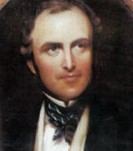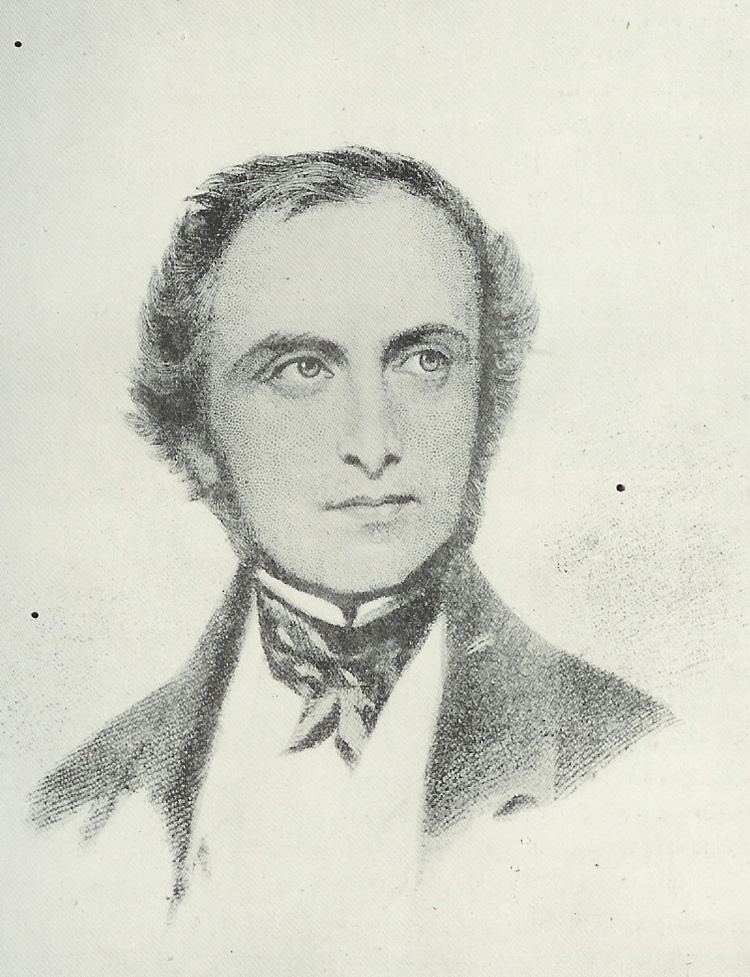Name John Drinkwater | Died August 12, 1851, Kolkata | |
 | ||
Occupation Pioneer in women's education Books The life of Galileo Galilei Education Westminster School, Trinity College, Cambridge | ||
John Elliot Drinkwater Bethune | Wikipedia audio article
John Elliot Drinkwater Bethune (1801–1851), previously John Elliot Drinkwater, a barrister and law member of the Governor-General's Council, was an Anglo-Indian lawyer and a pioneer in promoting women's education in 19th-century India. When his father added 'Bethune' to his name, he did likewise. In 1849, Bethune founded an institution for women's education in Calcutta (now Kolkata), then the capital of British India. The institute later bore his name and became famous as Bethune College.
Contents
- John Elliot Drinkwater Bethune Wikipedia audio article
- Early life
- Background
- Secular schools
- Construction of Bethune School
- Reaction
- Other activities
- References

Early life
He was born in Ealing, son of Col. John Drinkwater Bethune of Salford, who had earned fame as the author of History of the Siege of Gibraltar. A brilliant student, young John was educated at Westminster School, graduated as a wrangler from Trinity College, University of Cambridge, and later qualified for the Bar to secure an administrative position in Parliament. He was proficient in Greek, Latin, German, French and Italian and also earned fame as a poet. In 1848, he was sent to India as Law Member of the Governor General's Council and later became president of The Council Of Education.
Background
The earliest schools for Indian girls were opened at Gouribari in north Kolkata in 1819, by the Calcutta Female Juvenile Society, organised by Calcutta Baptist Mission Society. In 1820, Mrs. Gogerly opened a school under the auspices of London Missionary Society. In addition to reading and writing in Bengali, the girls were instructed in geography, needlework and the Bible. The students were from the lower orders of Hindu society and some were adult.
Ever since the School Society was established in 1818 by David Hare at Kolkata, the question of whether girls should be provided the same education as boys had been debated. Radhakanta Deb, one of the secretaries of the society and a leader of the conservative section of Hindu society, had opined in favour of girls' education and wanted girls to go to school along with boys. However, his views were not shared by others in society. In 1821, British and Foreign School Society sent Mary Ann Cooke to India to initiate women's education. When the differences of opinion amongst the members of the School Society prevented Miss Cooke from taking up her task, she started working with the Church Missionary Society. With her efforts at least 277 girls had the opportunity of education in ten schools. The first school for girls in India was opened by Mahatma Jotiba Govindrao Phule and his wife Savitribai Phule in 1850, at Bhide wada in Pune city of Maharashtra region of India.
Subsequently, at the initiative of Lady Amherst, wife of the Governor General, Lord Amherst, Bengal Ladies Society was set up. An official report in 1838 mentions nineteen girls' schools with around 450 students in different parts of Bengal. Most of those schools were set up by Christian women and were part of the efforts for propagating Christianity. The Bengali elite was still not ready to send their girls to school.
Secular schools
The Young Bengal group had been persistent in its advocacy of the cause of Indian women. Peary Charan Sarkar, a former student of Hindu College, then posted as headmaster of Barasat Government School took a leading part in setting up a free school for girls in 1847 in Barasat, a suburb of Calcutta (later the school was named Kalikrishna Girls' High School). Most possibly, Bethune took a cue from this school, when he went there for inspection as President of the Council of Education.
Construction of Bethune School
With the support of such people as Dakshinaranjan Mukherjee, Ramgopal Ghosh, Iswar Chandra Vidyasagar, and Madan Mohan Tarkalankar, Bethune set up the secular Native Female School in 1849 and donated all his movable and immovable property to the school. It was the first such effort in Kolkata and had a major impact on society. The government took it over in 1856 and renamed it Bethune School in 1862–63. Iswar Chandra Vidyasagar, Dwarkanath Vidyabhusan and other liberals supported the school for twenty years but the institution did not receive wide public support. In 1868, Miss Piggot, the headmistress was forced to resign because she had brought in Christianity, considered a dreaded alien faith in India at that time, into the teaching programme.
Reaction
As soon as the school was established the orthodox society of the day reacted sharply against the development. When the totally covered carriages of the newly established school clattered though the cobbled thoroughfares, people stared in awe and swore at the girls. It was common for people to say, 'Whatever was left of Kali Yuga (the age of darkness) has come! Once the girls get hold of the books nothing will be left.’
The noted Bengali poet of the period, Ishwar Chandra Gupta well focussed the spirit of public indignation:
The school went through a rough time until it was amalgamated with Banga Mahila Vidyalaya, initially established as Hindu Mahila Vidyalaya by Annette Akroyd, and some Brahmo gentlemen, including Dwarkanath Ganguly. A number of bright students joined the institution – Kadambini Bose, Sarala Das, Abala Das, and Subarnaprabha Basu, all of whom were prominent figures later. Bethune School was an eye-opener for the Bengali bhadralok (gentleman). It led to the opening of other such schools. Remarkably, with the opening of secular schools the earlier schools disappeared.
In the nineteenth century, people from orthodox Hindu families considered education of women almost a sin. They believed that a literate wife would lose her husband sooner than an illiterate one. Even in the eighties of the century the opposition to women's education continued to be strong. Over the decade the number of girl students in Bethune School remained almost the same. A majority of the students were from Brahmo families. In 1888, out of 136 students in Bethune School, 87 were Brahmos, 44 Hindus and 5 Christians. In 1886, Victoria College was revived and reconstituted as a Secondary School (it was started in 1882). Brahmo Girls School was set up in 1890 and Christ Church School started sending up girls for Entrance examinations in 1890. This meant that large number of girls from Brahmo and Christian families opted for institutions other than Bethune School. In 1894, out of 138 students in Bethune School, 70 were Hindus, 55 Brahmos and 13 Christians. It was only towards the end of the nineteenth century that prejudice against women's education had almost gone.
Other activities
Bethune was closely associated with the Calcutta Public Library and translation activities into Bengali. He published a treatise on women's education by Pandit Gour Mohan Vidyalankar and distributed it at his own cost.
In 1849, soon after his joining as Law Member of the Governor General's Council, Bethune prepared a draft to bring the British-born subjects of the crown under the jurisdiction of the courts and laws of the British East India Company. A powerful agitation by the Europeans scuttled the movie. In the same year, when Michael Madhusudan Dutt published his English book of poems, Captive Lady, Bethune opined that it was a folly for foreigners to attempt establishment as English poets, but if such talent was dedicated to the local languages, the country could greatly benefit.
